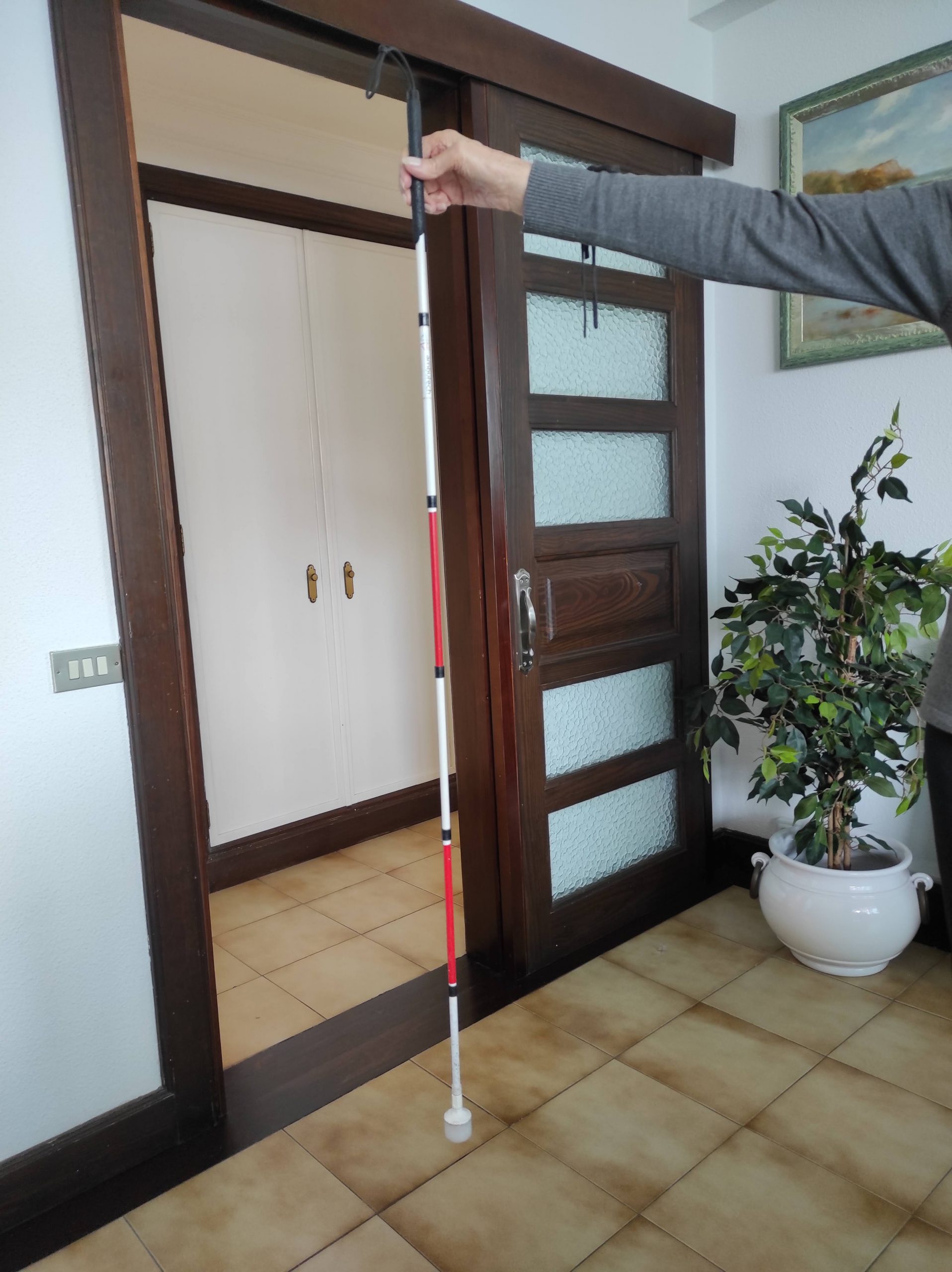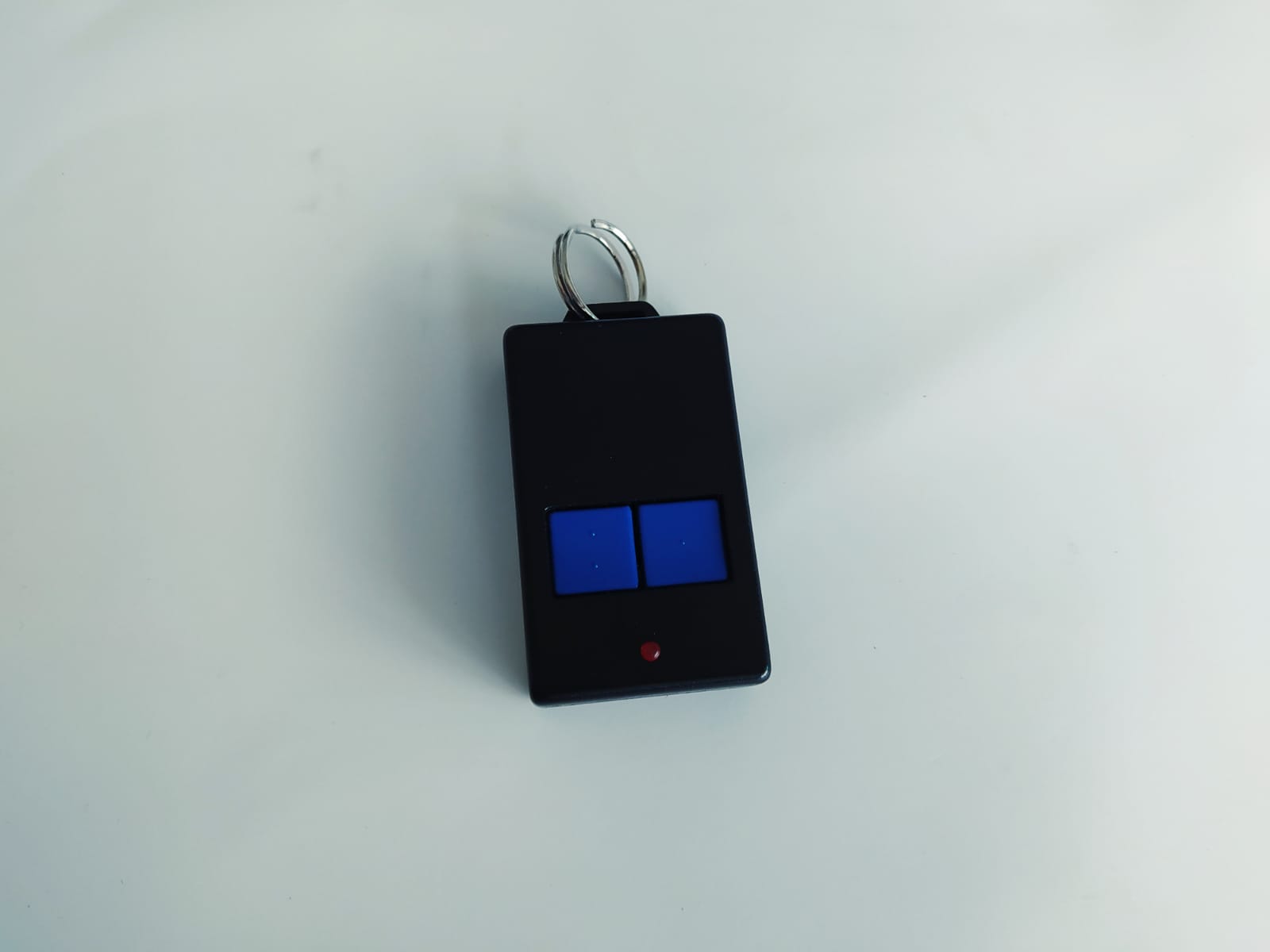The Red and White Cane: Obstacles and Barriers
Author: Lucia D’Arino, WFDB
Alegría (‘joy’ in Spanish) is a 72-year-old woman born and raised in the Canary Islands, Spain. She has lived and travelled around the world and speaks four languages (Spanish, French, English and Catalan). Alegría is also a woman with deafblindness. She is almost completely blind but hears well enough with a hearing aid as long as there is no background noise, and she is spoken to loudly and clearly.
Alegria often meets with guide-interpreters who assist her when she needs to go to the bank, the hospital or other everyday activities outside the home. The role of guide-interpreters is key, not only in terms of communication but also to overcome the barriers she experiences in her daily life. Challenges often amplified by the COVID-19 pandemic when face masks and shop counter plexiglass screens hinder clarity of speech.
Walking and being outdoors is important to Alegría:
“It is not just about going out with them to help me with paperwork or go for a walk, but psychologically I feel that I can recharge my energy”.
To navigate, Alegría uses a cane. The cane is red and white, which indicates that she is a person with deafblindness or in other words, that she has both a visual and a hearing impairment.
Alegría emphasizes the importance of raising awareness about the red and white cane because it can really make a difference when interacting with other pedestrians, hospital staff or society in general.
“Many times, I have had to explain to the doctors the meaning of the red and white cane because they did not know. So, if they ask me or sometimes if I have the chance, I’ll say it. I do not think that many people know what it means to be a person with deafblindness, as a joint disability.”
Alegría is a cancer survivor, having recovered from two breast and one bladder cancers. And she has a son with ALS[1], a degenerative of the motor neurons, meaning he is a wheelchair user. Alegría supports her son financially, as the State or national health insurance do not cover many of his expenses.
“He does not even get a hoist to be able to get out of the bed, which he needs. I had to buy it for him because he does not receive any help at all. I also buy a wheelchair every four years because two years (after the insurance pays for one) it is very worn out because of moving. So, the State gives just very little financial aid”.
Alegría loves to read novels in audiobook format and uses her iPhone daily. “Siri”[2], which serves as a screen reader, helps her navigate its functions and content. Amazon’s voice activated AI assistant “Alexa” has also proven very useful for checking the weather, turning on the TV or playing music. While these digital technologies have made her life easier and help her to stay independent in the later course of life, mobility remains the biggest challenge.
When Alegría goes out on her own, she uses a pedestrian device which, when activated, makes an acoustic noise to indicate when it is safe for her to cross the road. However, most traffic lights in her area do not have this system activated. The traffic light nearest to her home did some years ago, however, the creation of a bike lane resulted in the deactivation of this system in the traffic light nearest to her home, which she needs to cross to access a pedestrian area.
“It was requested like 20 times by ONCE, the Spanish National Organisation of the Blind, and by the users to get it back after they built the bike lane. They did nothing. We also asked to The City Hall”.
The lack of availability of this service has resulted in a loss of autonomy and independence for Alegría, as her freedom of movement is now severely restricted.
“So now I have to wait for someone to cross, if there is someone who really wants to help me. Otherwise, I cannot access the pedestrian area. But the City Hall did nothing.”
Even though the sound activation tool is essential to Algería’s safety and independence, some neighbors have complained about the noise these traffic lights make. Wondering about it, Alegría adds:
“(The sound system) would only get activated when a person who is blind pressed the button on its device. So, the neighbours would not be disturbed, because it is just in that instant, which on top of all the noise from cars, buses, lorries, the last thing you would be hearing is a “beep, beep, beep, beep”. Still, some people think it is disturbing”.
She also mentions that badly parked bikes, scooters and cars have increased physical impediments to successful navigation.
“It can either be a small van, construction work or people who are delivering to offices or little shops leaving a big trolley in the middle of the street. Other pedestrians in general are quite kind and warn me. The main barriers are the bikes and the scooters badly parked or riding where they shouldn’t”.
Alegría’s experience illustrates how physical accessibility, a barrier free environment, and the support of guide-interpreters are essential for an autonomous life. Alegría would like to contest many stigmas around women with disabilities. She is a resilient and strong woman and an essential support person for her son. Despite incredible difficulties, she overcomes the obstacles set before her and enjoys a fulfilling and happy life.
[1] Amyotrophic lateral sclerosis
[2] Virtual assistant that is part of Apple
Category
Release Date
July 2021
Useful Links
1) What is deafblindness?: https://www.wfdb.eu/what-is-deafblindness/
2) Deafblind interpretation: https://www.wfdb.eu/interpretation/
3) WFDB Report in deafblindness: https://www.wfdb.eu/deafblindness-in-the-world/



